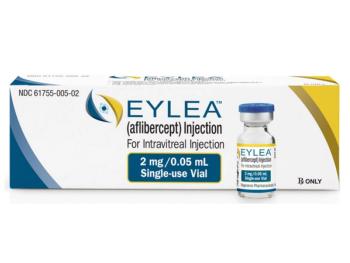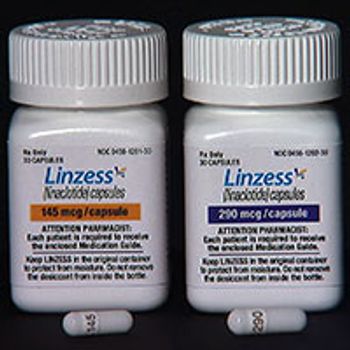
The Impact of Allergic Rhinitis On Employee Health and Productivity
Wellness Inventory, a survey-based program developed by Pfizer Inc. and the MEDSTAT Group, has consistently found allergic rhinitis to have a significant impact on employee productivity and employer costs.
The Impact of Allergic Rhinitis On Employee Health and Productivity
A Report from the Wellness Inventory
Donald H. Gemson, MD, Medical Director, Merrill Lynch
Benjamin Eng, MD, Senior Medical Director, Pfizer Inc
Health conditions prevalent among employees and the family members they care for significantly affect employee absenteeism, workplace productivity, and employer costs.1 As a result, employers have demonstrated a growing interest in identifying the conditions that have the greatest impact on their employees health and implementing targeted interventionssuch as physician-led health education classesto promote employee wellness. This interest is reflected in employers increased use of the Wellness Inventory, a survey-based program developed by Pfizer Inc and The MEDSTAT Group. The Wellness Inventory has consistently found allergic rhinitis to have a significant impact on employee productivity and employer costs.1,2
Allergic Rhinitis: Quick Stats3
US prevalence: 40 million people, including 19 million employed adults
Associated costs: $4.5 billion in direct costs per year
Impact: 3.8 million lost work and school days
Tested for validity and reliability, the Wellness Inventory assesses the impact of 11 medical conditions and four caregiver conditions on employee wellness, productivity, and associated costs. The 11 medical conditions are
- allergic rhinitis
- anxiety
- arthritis
- asthma
- coronary heart disease (CHD)
- depression
- diabetes
- hypertension
- migraine
- respiratory illnesses, and
- stress.
The caregiver conditionsconditions affecting someone for whom the employee provides careinclude Alzheimer's disease, otitis media, pediatric allergies, and pediatric respiratory illnesses.1
The Wellness Inventory, a completely anonymous survey, takes only a few minutes for employees to complete. It features 53 questions that capture the prevalence and impact of specific conditions in the preceding 12 months.
The Wellness Inventory: Quick Stats2
Designed in 2001 by Pfizer Inc and The MEDSTAT Group
Tested for reliability4 and validity5
Implemented among more than 120 employers
Completed by more than 36,000 employees
Used by employers across a range of industrieshealthcare, financial, manufacturing, utilities, state and municipal agencies, and school systems
Aggregate data identify rhinitis as the most common condition and as having the greatest impact on employee productivity/costs, reflecting its high prevalence
The Impact of Allergic Rhinitis
Allergic rhinitis affects some 40 million people in the United States.3 In 2001, allergic rhinitis prompted 12 million physician office visits.6 Further, the disease has been associated with estimated direct medical costs of $4.5 billion per yearand approximately 3.8 million lost work and school days.3
The Wellness Inventory has repeatedly identified allergic rhinitis as the most common medical condition and the condition having the greatest impact on absenteeism and presenteeismdecreased productivity at work due to health problems. Several sourcesfindings from a multiemployer study, aggregate data from the Wellness Inventory, and a single-employer case studysuggest a high prevalence, significant impact, and substantial cost associated with allergic rhinitis.
A Multiemployer Study
Findings from a recent study among more than 8,000 employees at 47 locations showed that 55% of workers experienced allergic rhinitis. Of all conditions, allergic rhinitis was associated with the highest costs from lost productivity, with a mean productivity loss of $593 per employee per year1 (Figure 1).
Figure 1. Average total productivity loss per employee surveyed1
* P<.05 for allergic rhinitis versus other conditions.
N=8267.
Adapted from Lamb et al. 1
Employees affected by rhinitis/hay fever reported experiencing symptoms for an average of 52.5 days per year, being absent 3.6 days per year, and losing 2.3 hours of productivity each workday while symptomatic at work.1 The net result: lost productivity costs totaling an estimated $4.9 million per year.1
Further, 7% of employees reported acting as caregivers for children with allergies.1 Associated lost productivity costs were estimated to be $85 per year per affected employee, or a total of $700,000 from the more than 8,000 employee sample.1
Results of this study reveal the economic burden of allergies in the workplace, totaling $5.6 million per year among the 8,000 employees surveyed.1 The findings from this multiemployer study are consistent with the results of the Wellness Inventory data captured from all surveys conducted since the program was first implemented in 2001.
Data from the Wellness Inventory2
The expanded data set of more than 36,000 surveys completed since the debut of the Wellness Inventory in 2001which include the more than 8,000 employee responses discussed abovealso demonstrates the high prevalence and impact on productivity of allergic rhinitis. These data identify allergic rhinitis as the most common medical condition among employees surveyed. On average, allergic rhinitis was experienced by 56% of employees surveyed (Figure 2). The condition had the highest costs associated with absenteeism ($10 million, or $496 per employee) and presenteeism ($13 million, or $645 per employee) for a total cost of nearly $23 million ($1,140 per employee) in lost productivity (Figure 3). Among caregiver conditions, pediatric allergies were associated with the highest presenteeism costs ($1.6 million, or $624 per employee).
Figure 2. Percent of respondents reporting the selected condition during the survey period2*
*N=36010.
Figure 3. Estimated annual combined cost of presenteeism amd absenteeism for all affected respondents2
Many employers may not yet recognize the prevalence and impact of allergic rhinitis on their work force. However, the impact of this condition on productivity and employer costs emphasizes the need to give more attention to this condition.
Employer Case StudyMerrill Lynch2
In October 2002, the Wellness Inventory was implemented at three Merrill Lynch sites in the northeast. Incorporated as part of a large employee health fair and promoted to employees prior to the event, the Wellness Inventory was completed by more than 2,000 employees.
Although these responses are also included in the aggregate data, the results for this employer demonstrate the need for wellness interventions targeted to allergy. Fifty-nine percent of Merrill Lynch employees reported experiencing allergic rhinitis during the preceding 12 months. This condition was associated with significant costs in lost productivitya total of nearly $820 per employee.2
As a result of these findings, Merrill Lynch offered an "Allergy 101" educational lecture the following allergy season in April and May 2003. Anticipating that the prevalence and impact of rhinitis would be similar among employees at other Merrill Lynch locations, the company made the lecture available at a total of five sites.
The course was led by various physicians from the community who presented information about rhinitis. The lecture was structured as a 1-hour meeting with a 40-minute presentation and a 20-minute question-and-answer session. A medication effectiveness survey administered at each lecture helped assess how well various over-the-counter and prescription medications relieved employees allergy symptoms and which ones employees believed were most effective.
Since the Wellness Inventory provides employers with an anonymous sample of information about employee health status, it is impossible to track individual employee outcomes. The resource was not designed to measure such outcomes. Rather, the Wellness Inventory was created to allow employers to identify areas of opportunity and to subsequently craft an action plan that helps target those areas, as Merrill Lynch has done.
Merrill Lynch presented the findings at the National Business Group on Health in November 2003. In addition, Merrill Lynch plans to offer the Wellness Inventory and "Allergy 101" intervention course again in the future.
"Pfizer partners with employers to help them define and benchmark employee health and quantify the economic impact to develop interventions that directly address employee needs and improve employee health and productivity," says Jane Newman, RN, MPH, National Employer Account Manager of Pfizer, Inc, who partnered with Merrill Lynch to implement the Wellness Inventory. "Merrill Lynch used the Wellness Inventory to identify key conditions affecting their employees so the company could best meet the needs of its workers."
This case study demonstrates the data-driven approach companies can take when they employ a comprehensive strategy to improving employee health and productivityone that includes not only identifying conditions affecting employee wellness and job performance but also implementing interventions to help improve health and productivity. It also shows that survey data can be used to expand the focus of disease management outside of the usual target conditions (eg, asthma, diabetes) to include those that affect productivity of a large number of employees.
Conclusion
As employers increasingly assess the relationship between employee health and productivity, many are identifying a significant impact for allergic rhinitis. Data from the Wellness Inventory have been used to better understand absenteeism and presenteeism and to initiate interventions as part of a targeted approach to improving employee health and workplace productivity. Findings from studies using a tool such as the Wellness Inventory suggest that employers should consider the total costs, including productivity, of allergic rhinitis and other prevalent health conditions when designing employee benefits packages.
REFERENCES
1. Lamb CE, Ratner PH, Johnson CE, Ambeganonkar AJ, Sampson N, Eng B. Economic impact of allergic rhinitis on productivity in the workplace. Presented at the American Academy of Allergy, Asthma and Immunology annual meeting, April 2003.
Data on file, Pfizer Inc.
2. The Allergy Report: Disease of the Atopic Diathesis. Vol 2. Milwaukee, WI: The American Academy of Allergy, Asthma & Immunology, Inc; 2000.
3. Goetzel RZ, Ozminkowski RJ, Long SR. Development and reliability analysis of the Work Productivity Short Inventory (WPSI) instrument measuring employee health and productivity. J Occup Environ Med. 2003;45:743-762.
4. Ozminkowski RJ, Goetzel RZ, Long SR. A validity analysis of the Work Productivity Short Inventory (WPSI) instrument measuring employee health and productivity. J Occup Environ Med. 2003;45:1183-1195.
5. National Center for Health Statistics. Allergies/hay fever. Available at:
Donald Gemson, Benjamin Eng. The Impact of Allergic Rhinitis On Employee Health and Productivity.
Business and Health
August 2004;22.
Newsletter
Get the latest industry news, event updates, and more from Managed healthcare Executive.




















































